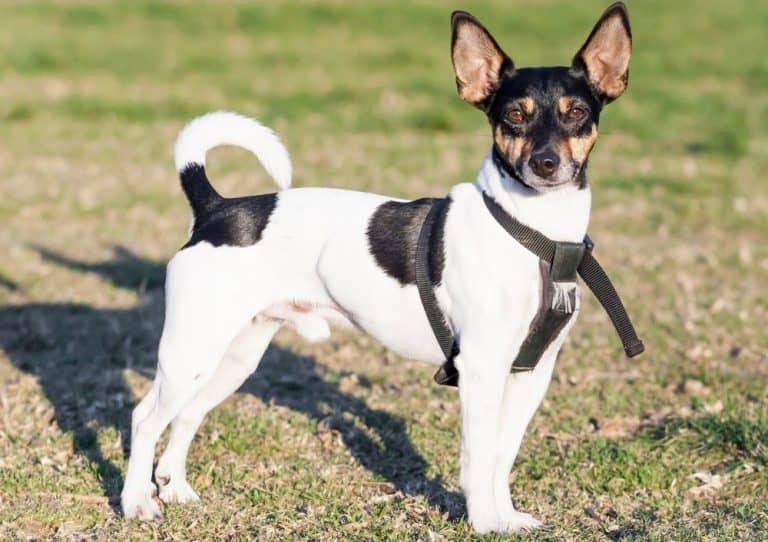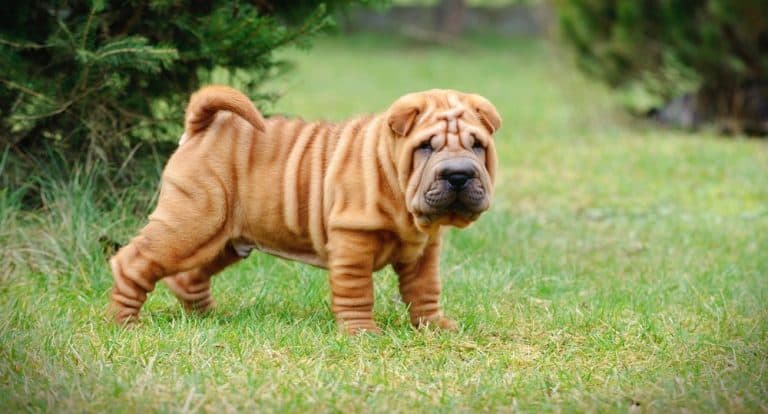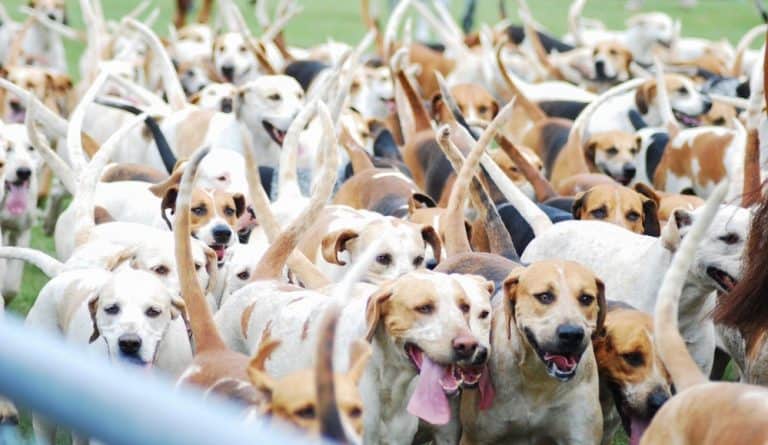Pekingese Weight Chart – Size & Growth Chart
For centuries the Imperial family of China bred Pekingese dogs to serve as their cherished companions. This is a very special breed and a Pekingese weight chart may be helpful to owners.
These days they are used as show dogs greeting everyone they meet, with their distinctive grace and dignity.
However, they do like to bark a lot so if there are noise restrictions in your apartment building you probably shouldn’t choose this breed.
Pekingese are known to have protuberance and eyes that are round. This means that their eyes can be injured easily from the swipe of a claw or paw so keep them safe.
Their profuse coats will need daily care to be maintained properly. We have outlined their development so that you can understand what you should expect.
When Is A Pekingese Fully Grown?

Pekingese are small toy dogs, so they usually reach their adult size faster than other breeds. This is usually by the time they are around 9 months of age.
To be more accurate, it is actually 9 to 12 months. However, some Pekingese may obtain adulthood before they are 9 months while others may still be growing after 12 months.
There are many factors that determine the rate of growth as well as final size. Speak to your veterinarian who will be able to guide you further on this matter.
Pekingese are long-bodied and their limbs are a bit bowed. Many people describe them as muscular or stocky in build.
They are also low and closer to the ground. This toy breed usually weighs between 6 and 14 lb and stands at 6-9 inches.
Pekingese Weight Chart
| Pekingese | Mini Pekingese | Sleeve Pekingese | |
|---|---|---|---|
| Weight (lbs) | 8 - 14 lbs | 6 - 8 lbs | 4 - 6 lbs |
| Weight (kg) | 3.6 - 6.3 kg | 2.7 - 3.6 kg | 1.8 - 2.7 kg |
The Pekingese growth chart below gives you weight estimations of your Pekingese Dog as he develops. However, you may notice that your dog is not exactly the size that we have estimated.
In most cases, you have nothing to worry about since dogs develop at different rates and many factors determine the way they develop and their size at any given time.
That said if you have a dog that weighs considerably less than our estimations then you can do a simple assessment of his physical body.
Pekingese are dogs with a lot of fur, so a visual assessment may not be appropriate. However, you can run your hands along the spine to see if you can feel the bone without pressing down too hard.
If you can then most likely your dog is underweight. However, the best way to know for sure is to check with your veterinarian who will give you the best advice.
To use this Pekingese weight chart, you simply need to know your dog’s exact age and match it to the closest age we have listed on the chart.
Next, you need to look for the weight range which coincides with this age and compare it with your dog’s actual weight.
This is how you check to see if your dog is developing in step with the most others in his age group.
Pekingese Growth Chart – What To Expect
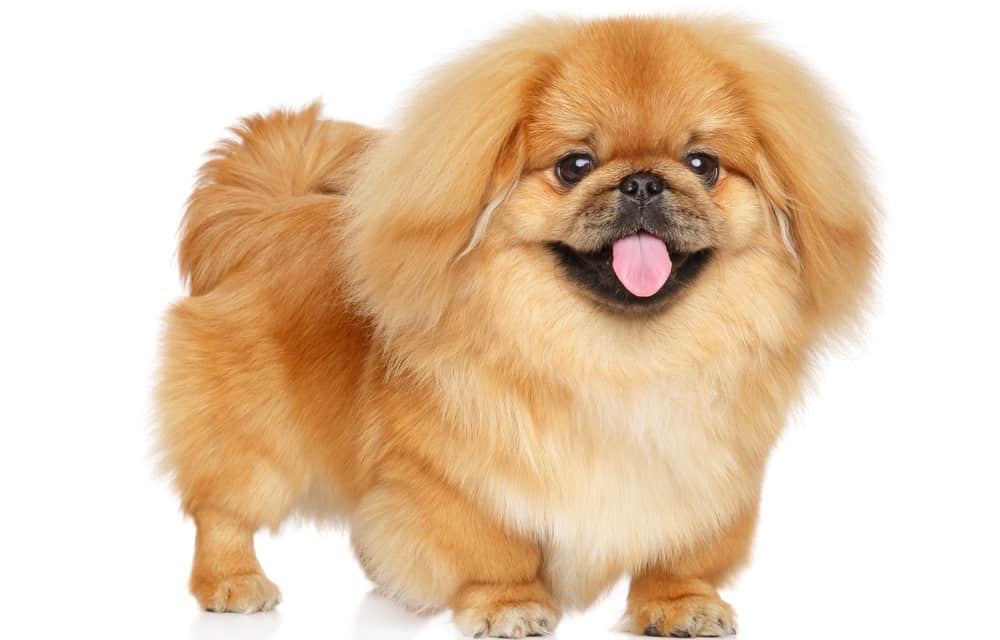
Birth – 2 Weeks
Pekingese are born into litter sizes of about 1-10 puppies. However, they are a small breed and there is sometimes trouble in birth when the litter size is large.
Some puppies may be stillborn and the mother’s is health is at risk. They are born sensitive without sight and the ability to use their muscles properly.
They will depend on their mothers for management and warmth along with their littermates. Allow them to have this time with their mother without your interference.
3 Weeks – 12 Weeks
Expect that your dog will go through a number of changes during this period. It is very important that you facilitate these changes as it is crucial to your dog’s development.
One major change is the shift from his mother’s milk to solid foods.
The commercially bought kibble may need to be softened just a bit before your dog can eat it for the first time. His tender teeth and gums may not be able to handle the food.
Also, remember to choose a dog food that does not have large kibble sizes because it can affect your dog’s development through his diet if he is unable to eat.
4 Months – 9 Months
Most Pekingese dogs will be fully grown by the end of this stage. When they are fully grown they should be about 6 to 9 inches in height.
Both genders have typically the same height however the weight differs slightly in favor of the males. Nevertheless, they usually weigh around 14 lb.
At this time, training is particularly important because you want to ensure that your dog is displaying behaviors that are acceptable.
Also, look out for your dogs entering their heat cycle around this time. They may begin to display strange behaviors because of their bodily changes.
Make sure that they cannot escape because some of them may run away to meet with other dogs.
10 Months – 18 Months
Your Pekingese dog may still be growing in the early part of this stage. This means that they will still display puppy-like tendencies.
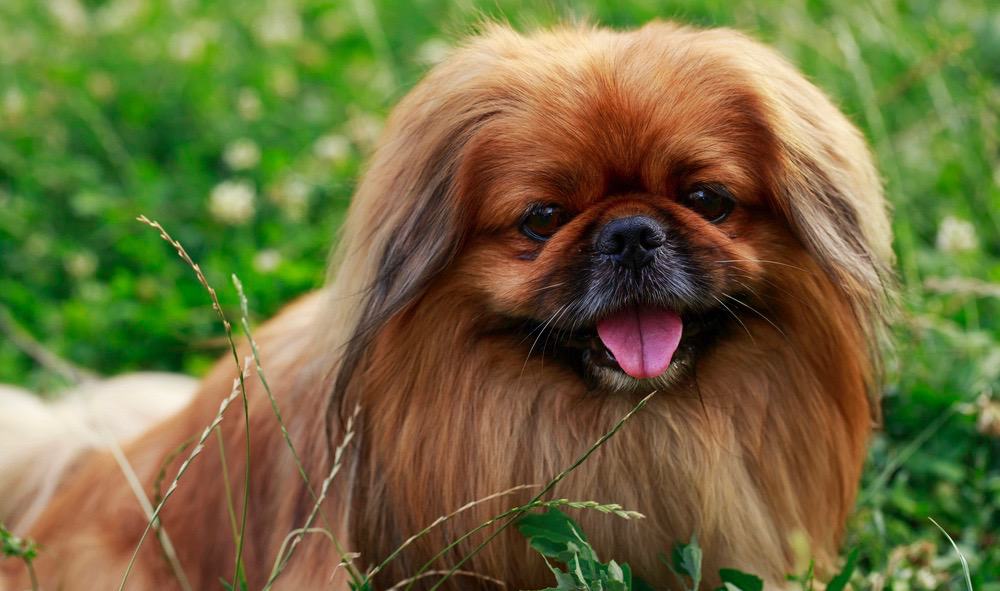
They are naturally playful dogs, and you can expect that they will be in and out of their heat cycle. Continue to provide proper training to them especially socialization so that they can grow accustomed to being around other people.
Adult
As an adult, you should feed your Pekingese dog at least 1/2 to 1 cup of high-quality to ensure that they remain healthy.
Remember to take into consideration their age when feeding them. They should be fed at specific times throughout the day, and it would be better if they were not free-fed.
Since they are a toy breed you should make every effort to avoid obesity.
How Big Do Pekingese Get?
Since a Pekingese is a small dog, accommodations are not quite a hassle as many larger dogs, but many owners still need to know how big they will get.
There are a number of ways that you can find this out. The very first way is referencing the growth charts within this article to gain a fair idea. However, there are other ways available to you.
The best way to know how big your dog will be is by checking his parents’ weight. Dogs are usually the average size of both parents.
Because of genetics, dogs usually inherit features from their parents. You can also have a DNA test done so that you can gain a clearer idea of your dog’s ancestry which allows you to fine-tune your predictions.
Also, remember that when a dog is not completely grown, their paws and their head are a bit bigger in proportion to the rest of their bodies.
This means that if your dog’s paw is slightly larger in proportion to his body then he is still developing.
Will Neutering/Spaying My Pekingese Affect His Growth?
People usually disagree about neutering and spaying their dogs. However, the consensus is that Pekingese dogs should wait at least until they are 12 months before you spay or neuter them.
Neutering, in particular, affects your dog’s growth because the hormones in his body affect growth as well.
Usually, dogs who have been spayed or neutered too early end up with joint problems. If you were to wait until bones are fully developed it will it be better for your dog.
Nevertheless, there are many benefits to spaying and neutering such as the prevention of unwanted pregnancies which can affect your dog’s health especially since childbirth is difficult for this breed.
It may also reduce your dog’s aggression. But the most important benefit of spaying and neutering is the reduction in the likelihood of acquiring certain diseases.
Pekingese Height Chart
Measuring your Pekingese dog is not difficult at all, as long as you understand what you are doing. Get a carpenter’s level a measuring tape and a pencil.
Place your dog right next to a wall so that you can see his profile. Make sure that he is standing up straight without looking sideways.
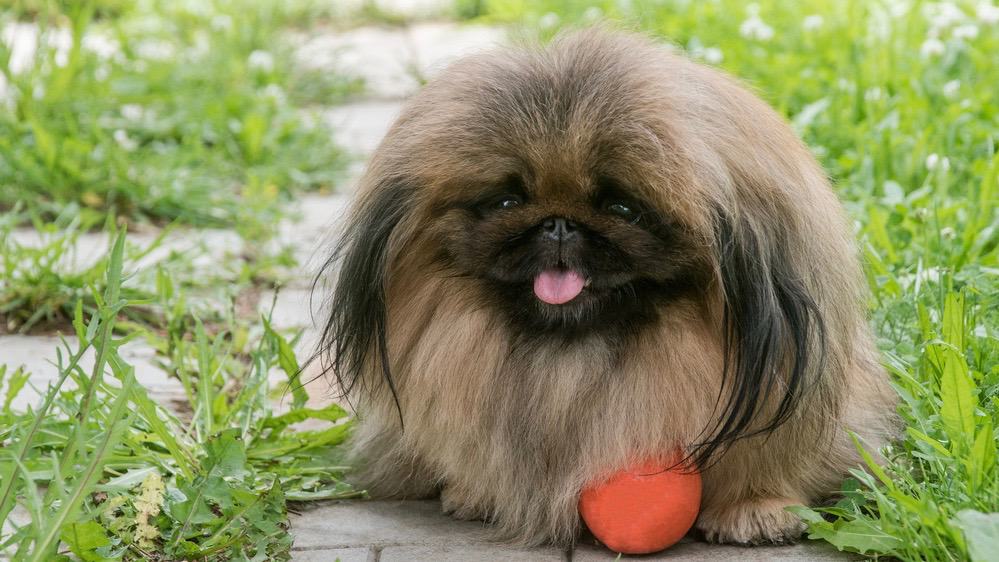
Then quickly grabbed the carpenter’s level and measure the points of his withers which is the highest point of his shoulder blades.
Next, you should extrapolate this point to the end of the wall and take your measuring tape and measure this exact point toward the floor in a straight line. This measurement is your dog’s height.
Shih Tzu vs Pekingese Size
It is not surprising that the Shih Tzu and the Pekingese breed are compared to each other. They are both Oriental canines even though their Origins are slightly different. They are both small and adjust well to family life.
Both of these dogs are small, but the Pekingese is slightly smaller with a height that is usually 15 to 23 cm and a week of 5 -6 Kg.
On the other hand, the Shih Tzu usually stands at 20 – 28 cm with a weight of 4 -7 kg.
Factors That Affect Pekingese Growth
Genetics & Gender
Genetics do play a part in the development of a Pekingese has growth because they are a toy breed and reach adulthood faster than most other breeds.
This is a characteristic that was passed down from their parents. Females who are usually a bit smaller than their male counterparts also develop a bit faster. This is because they have lots of growing to do.
Nutrition
Always feed your Pekingese dog high-quality dog food even if you prepare it yourself or buy commercially manufactured food.
Keep in mind that the food you give him should be appropriate to his age and level of exercise.
Remember that older dogs tend to be more sedentary and thus will require less food. Also, they need less protein when they become adults.
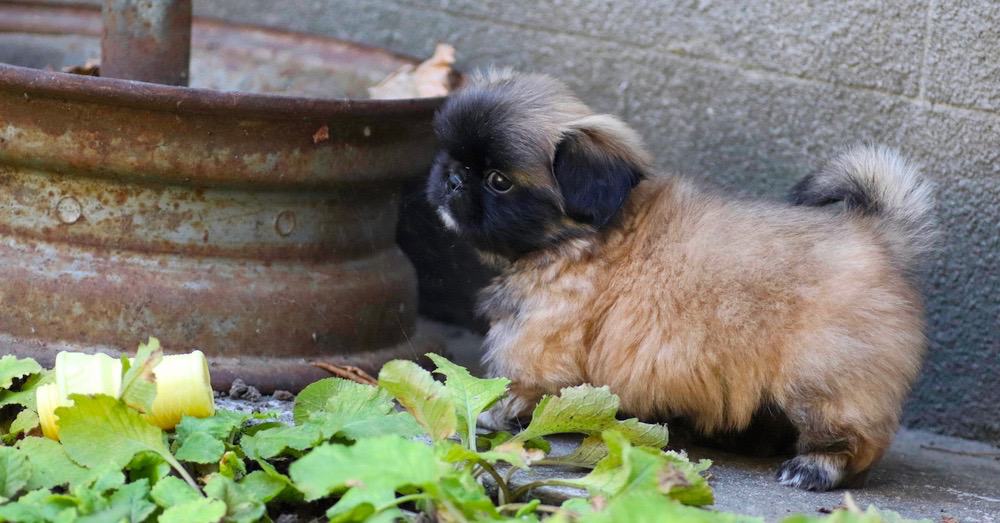
This is because developing dogs naturally require more protein in their diet. Furthermore, give them lots of healthy fats and fiber for good digestion.
Physical Activity & Health
This is a confident and charming breed that usually forms a close bond with their favorite human. They enjoy playtime and serve as comfort and amusement.
They need only modest exercise keeping in mind their size. Exercise will keep them healthy and maintain their muscles and bones.
However, exercise should not be too strenuous as it can put major pressure on their joints. They do not make the best jogging partners as it may be too difficult for them.
What If My Pekingese Is Not The Right Weight
A Pekingese is a toy breed, so you can expect that they will not weigh quite a lot. Although not all of them will be the same size.
They also develop at different rates which are determined by a myriad of factors such as their diets, exercise level, and genes.
To do a physical assessment of your dog’s weight you can run your hands along his ribs to see if you can feel the bone without pressing down overly hard. If you can feel his ribs too easily then most likely your dog is underweight.
On the other hand, if all you feel is fat and no rib outline then he may be overweight.
When all is said and done, the best way to know for sure is to check with your veterinarian who will give you the best advice.
There is also a visual test that is used to determine if your dog is overweight but because a Pekingese has so much fur it may not be as effective. They usually weigh between 6 and 14 lb and stand at 6-9 inches.
Pekingese Genetics And Common Health Problems
Even though Pekingese are usually healthy they are prone to several health conditions that may reduce their lifespan page.
Patellar Luxation: This is a common problem where are your dog’s patella is not properly aligned leading to lameness or a limp.
Your dog may also be bow-legged because of this condition. you may need to have your dog undergo surgery to repair this condition.
Brachycephalic Syndrome: This is a condition where your dog’s airways are obstructed. You may notice your dog sniffing or snorting because of this disease.
They may also have a small trachea. Make sure that your dog is not subjected to too much heat when they have this condition.
Cataracts: This is where there is an opacity on the lens of the eye making as his difficult for your dog to see. It looks cloudy and mostly occurs when your dog is a senior. The good news is a simple surgery can correct this condition.
Final Words
Pekingese are very intelligent us stubborn tendencies, which is why training must be done early.
But they should not be trained harshly because they do not respond well to severe discipline. This may cause them to be defensive or aggressive.
Another thing you need to be aware of is the wrinkling of a Pekingese’s face which causes problems when the skin folds become infected.
This usually occurs when there is a buildup of moisture which is the ideal environment for harmful bacteria.
Make sure that they are properly groomed weekly which includes brushing their hair and cutting off access to unnecessary fur.
This can go a long way to reducing downtown shedding all over your living space.



